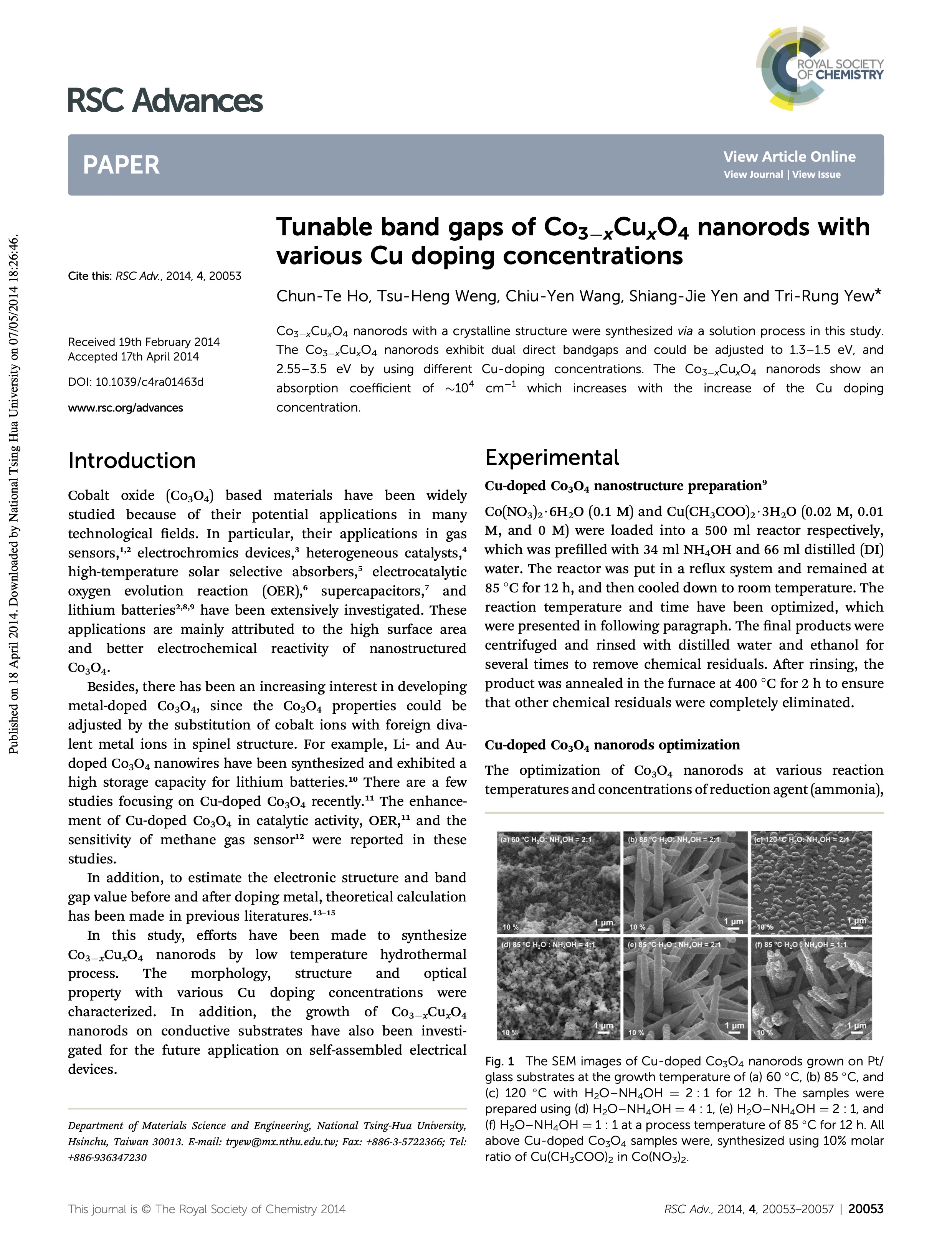
Materials Research
- Duration: 2010 July (2 years)
- National Tsing Hua University
- Area: Energy materials, new absorption layer for solar cell application
- Duration: 2010 July (2 years)
- National Tsing Hua University
- Area: Energy materials, new absorption layer for solar cell application
- National Tsing Hua University
- Area: Energy materials, new absorption layer for solar cell application

Publication:
Tunable band gaps of Co3−xCuxO4 nanorods with various Cu doping concentrations
Chun Te Ho et.al, RSC Adv., 2014,4, 20053-20057 IF: 4.036 (2021)
Co3−xCuxO4 nanorods with a crystalline structure were synthesized via a solution process in this study. The Co3−xCuxO4 nanorods exhibit dual direct bandgaps and could be adjusted to 1.3–1.5 eV, and 2.55–3.5 eV by using different Cu-doping concentrations. The Co3−xCuxO4 nanorods show an absorption coefficient of ∼104 cm−1 which increases with the increase of the Cu doping concentration.

Patent:
Anode material for secondary battery, anode for secondary battery and secondary battery
Tri-Rung Yew, Kai-Wei Lan, Chun-Te Ho et.al, U.S. patent No.:20210226208A1
An anode material for a secondary battery is provided. The anode material for the secondary battery includes a metal oxide containing four or more than four elements, or an oxide mixture containing four or more than four elements. The metal oxide includes cobalt-copper-tin oxide, silicon-tin-iron oxide, copper-manganese-silicon oxide, tin-manganese-nickel oxide, manganese-copper-nickel oxide, or nickel-copper-tin oxide. The oxide mixture includes the oxide mixture containing cobalt, copper and tin, the oxide mixture containing silicon, tin and iron, the oxide mixture containing copper, manganese and silicon, the oxide mixture containing tin, manganese and nickel, the oxide mixture containing manganese, copper and nickel, or the oxide mixture containing nickel, copper and tin.

Patent:
SELF-ASSEMBLYNANO-COMPOSITE
SOLAR CELL
Che Ning Yeh, Chun-Te Ho et.al, U.S. patent No.:8937241
A self-assembly nano-composite solar cell comprises a substrate, a first electrode layer, a composite absorption layer and a second electrode layer. The first electrode layer is formed on the substrate. The composite absorption layer is formed over the first electrode layer and includes a plurality of vertical nano-pillars, a plurality of gaps each formed between any two adjacent nano-pillars, and a plurality of bismuth sulfide nano-particles filled into the gaps and attached to the nano-pillars. The second electrode layer is formed over the composite absorption layer. Through etching and soaking in solutions, the composite absorption layer with nano-pillars and bismuth sulfide nano-particles is fabricated to form a self-assembly nano-composite solar cell having high power conversion efficiency.